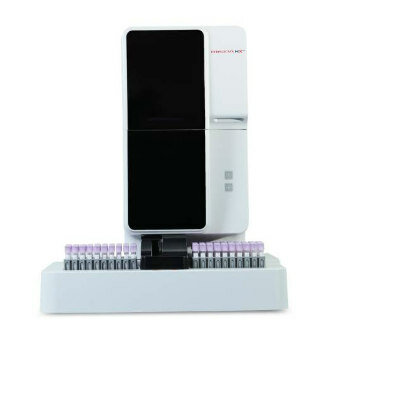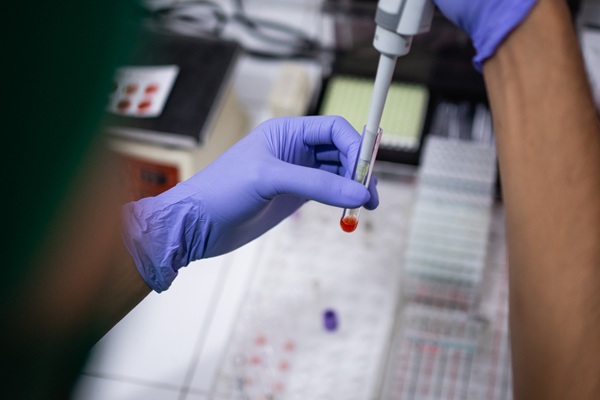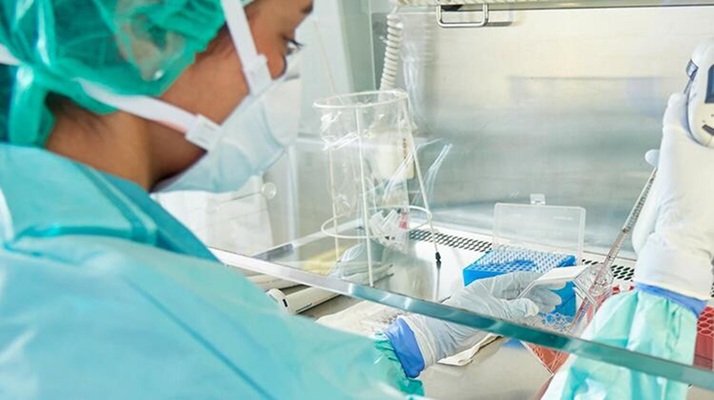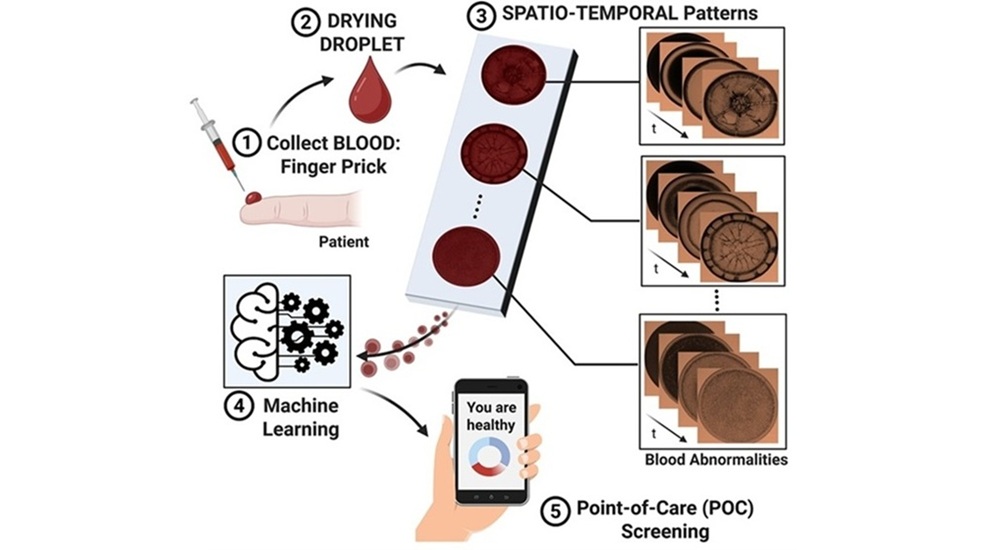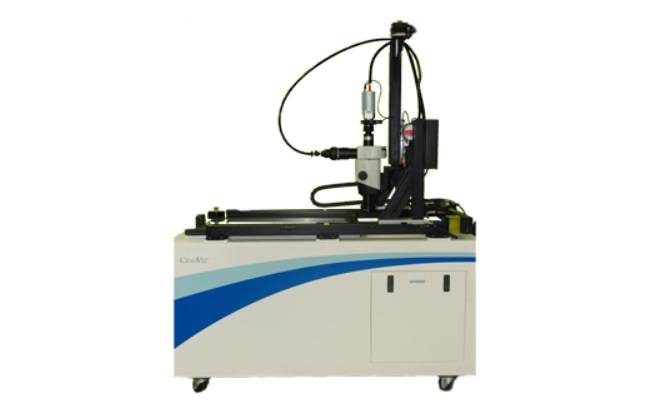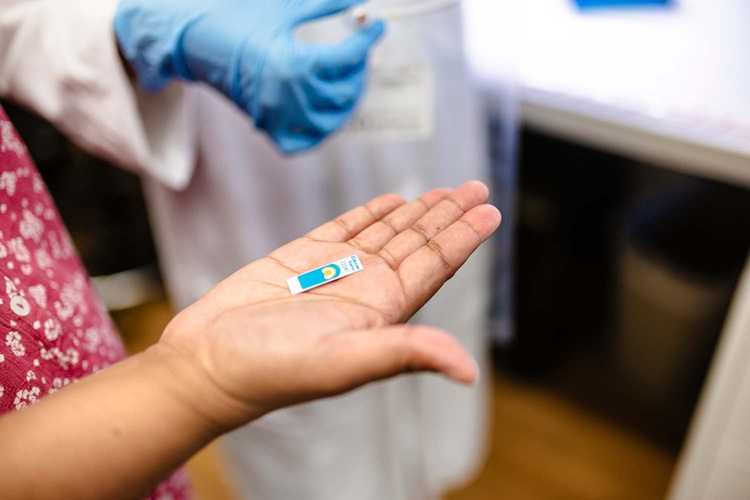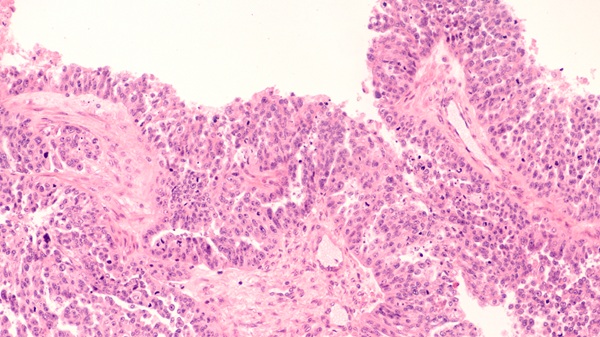Two Newly Developed Tests May Better Diabetes Diagnosis and Monitoring
|
By LabMedica International staff writers Posted on 28 Jul 2015 |
At AACC 2015 (July 26-30; Atlanta, GA, USA) research teams presented results of successful testing of two new potential methods for diagnosing and monitoring diabetes in its standard or gestational forms. The findings may lead to easier, timelier, and more affordable ways of identifying and treating this chronic disease.
One test study, by a research team led by Prof. Sridevi Devaraj, PhD, of Texas Children’s Hospital and Baylor College of Medicine (Houston, TX, USA), was to determine if a blood biomarker could be identified for gestational diabetes (GD), which occurs only during pregnancy and poses serious health risks for both mother and baby.
Today’s test for standard diabetes, which measures levels of the biomarker glycated hemoglobin (HbA1c), has limited usefulness for GD. The HbA1c test measures patient average glucose blood levels over a period of 3 months, and cannot be used to determine a patient’s blood glucose values on a daily, or even weekly, basis. This makes it challenging to closely track glucose levels during relatively few weeks of pregnancy, especially as GD is not diagnosed until the 3rd trimester.
Using stored blood samples collected from 124 pregnant women, Prof. Devaraj and her colleagues measured the levels of 3 types of proteins. They found that the levels of one—1,5Anhydroglucitol (1,5AG)—were significantly different in the women diagnosed with GD. The researchers were also able to establish a specific cutoff level at which the concentration of 1,5AG became a reliable predictor of which women had diabetes. One of the main potential advantages of 1,5AG as a biomarker for GD is its short “halflife” of 2 weeks, compared to HbA1c’s of 3 months.
“Our findings are very preliminary and need to be confirmed in larger groups of women,” said Prof. Devaraj, “but, if confirmed, they suggest a possible new and more immediate approach for diagnosing and monitoring diabetes during pregnancy.”
For the second test study, a research team led by Joris R. Delanghe, MD, PhD, Ghent University (Ghent, Belgium), investigated the novel view of whether fingernail clippings could be used instead of blood to diagnose and monitor diabetes. They collected nail clippings from 25 people with and 25 without diabetes. After the clippings were ground into powder, a relatively inexpensive spectrometer was used to measure the amount of nail protein that had undergone glycation (bonding with sugar molecules).
“We found a striking difference in the measurements between the control group and the patients with diabetes,” said Prof. Delanghe, “This finding suggests that nail clippings may serve as a reliable and noninvasive diagnostic tool,” with potential to make diagnosing diabetes much simpler and less expensive. Nail clippings, unlike blood samples, can be obtained noninvasively. They also take up little space and can be stored at room temperature for at least 1 month without affecting spectrometer outcomes.
“The proposed test may become particularly useful in low and middle income countries, where laboratories are often located long distances from where patients live,” said Prof. Delanghe.
Related Links:
American Association for Clinical Chemistry (AACC)
AACC 2015 Annual Meeting & Clinical Lab Expo
One test study, by a research team led by Prof. Sridevi Devaraj, PhD, of Texas Children’s Hospital and Baylor College of Medicine (Houston, TX, USA), was to determine if a blood biomarker could be identified for gestational diabetes (GD), which occurs only during pregnancy and poses serious health risks for both mother and baby.
Today’s test for standard diabetes, which measures levels of the biomarker glycated hemoglobin (HbA1c), has limited usefulness for GD. The HbA1c test measures patient average glucose blood levels over a period of 3 months, and cannot be used to determine a patient’s blood glucose values on a daily, or even weekly, basis. This makes it challenging to closely track glucose levels during relatively few weeks of pregnancy, especially as GD is not diagnosed until the 3rd trimester.
Using stored blood samples collected from 124 pregnant women, Prof. Devaraj and her colleagues measured the levels of 3 types of proteins. They found that the levels of one—1,5Anhydroglucitol (1,5AG)—were significantly different in the women diagnosed with GD. The researchers were also able to establish a specific cutoff level at which the concentration of 1,5AG became a reliable predictor of which women had diabetes. One of the main potential advantages of 1,5AG as a biomarker for GD is its short “halflife” of 2 weeks, compared to HbA1c’s of 3 months.
“Our findings are very preliminary and need to be confirmed in larger groups of women,” said Prof. Devaraj, “but, if confirmed, they suggest a possible new and more immediate approach for diagnosing and monitoring diabetes during pregnancy.”
For the second test study, a research team led by Joris R. Delanghe, MD, PhD, Ghent University (Ghent, Belgium), investigated the novel view of whether fingernail clippings could be used instead of blood to diagnose and monitor diabetes. They collected nail clippings from 25 people with and 25 without diabetes. After the clippings were ground into powder, a relatively inexpensive spectrometer was used to measure the amount of nail protein that had undergone glycation (bonding with sugar molecules).
“We found a striking difference in the measurements between the control group and the patients with diabetes,” said Prof. Delanghe, “This finding suggests that nail clippings may serve as a reliable and noninvasive diagnostic tool,” with potential to make diagnosing diabetes much simpler and less expensive. Nail clippings, unlike blood samples, can be obtained noninvasively. They also take up little space and can be stored at room temperature for at least 1 month without affecting spectrometer outcomes.
“The proposed test may become particularly useful in low and middle income countries, where laboratories are often located long distances from where patients live,” said Prof. Delanghe.
Related Links:
American Association for Clinical Chemistry (AACC)
AACC 2015 Annual Meeting & Clinical Lab Expo
Latest AACC 2015 News
- Automated Molecular Diagnostics System Presented at AACC 2015
- Portable Molecular Diagnostics System Unveiled At 2015 AACC
- Expanded Steroid Control Launched at the 2015 AACC Annual Meeting
- Innovative New Technology to Provide Plastic-Exterior Components with Glass Interior, Presented at AACC 2015
- Eco-Friendly Immunoassay Reagents Featured at AACC 2015
- Low Cost Point-of-Care DNA Amplification Test for Chlamydia Infection Demonstrated at the 2015 AACC Annual Meeting
- Inexpensive Multipurpose Point-of-Care Analyzer Unveiled at 2015 AACC Annual Meeting
- State-of-the-Art Automated Laboratory Systems Highlighted at the 2015 AACC Annual Meeting
- Siemens Showcases Multiple New IVD Solutions at AACC 2015
- New HPLC Quadruples Clinical Throughput Capabilities, Displayed at AACC 2015
- Diagnostic Test that Measures Active Renin in Hypertension Displayed at the 2015 AACC Annual Meeting
- Hair Testing May Offer Insights into Asthma-Related Complications in Pregnancy
- CE Marking of Theranostic Monitoring Test Announced at 2015 AACC Annual Meeting
- Ebola Rapid Lateral Flow Test Previewed at the 2015 AACC Annual Meeting
- AACC: Better Quality and Patient-Friendliness Needed in Direct Testing
- Clinical Chemistry Instruments and Reagents Under Scrutiny at the 2015 AACC Annual Meeting
Channels
Clinical Chemistry
view channel
Chemical Imaging Probe Could Track and Treat Prostate Cancer
Prostate cancer remains a leading cause of illness and death among men, with many patients eventually developing resistance to standard hormone-blocking therapies. These drugs often lose effectiveness... Read more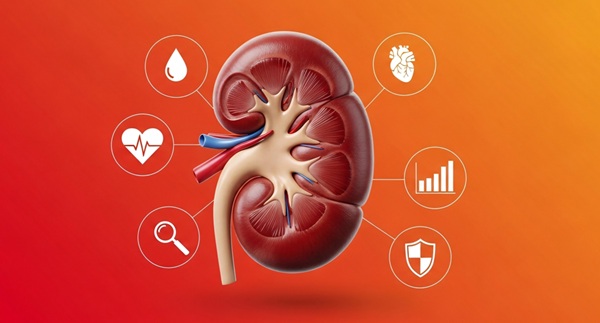
Mismatch Between Two Common Kidney Function Tests Indicates Serious Health Problems
Creatinine has long been the standard for measuring kidney filtration, while cystatin C — a protein produced by all human cells — has been recommended as a complementary marker because it is influenced... Read moreMolecular Diagnostics
view channel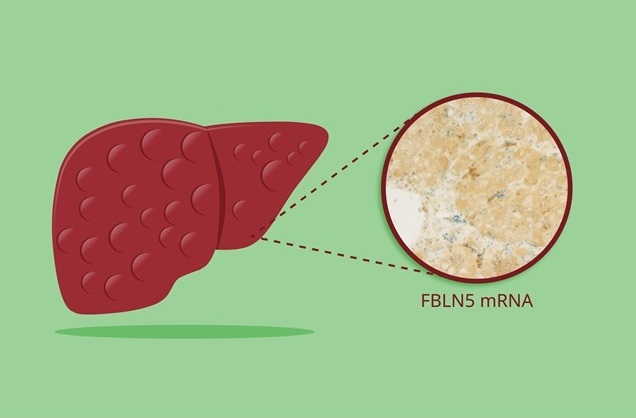
Blood Test to Enable Earlier and Simpler Detection of Liver Fibrosis
Persistent liver damage caused by alcohol misuse or viral infections can trigger liver fibrosis, a condition in which healthy tissue is gradually replaced by collagen fibers. Even after successful treatment... Read more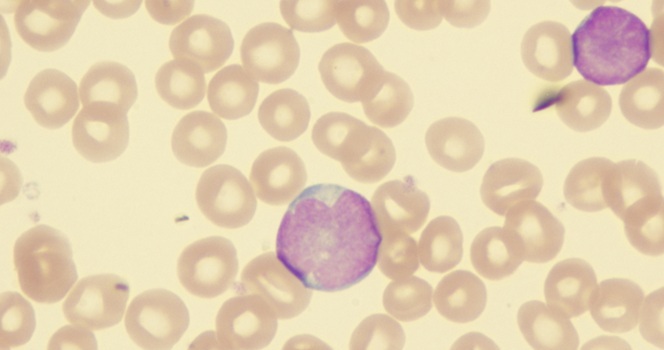
Genetic Marker to Help Children with T-Cell Leukemia Avoid Unnecessary Chemotherapy
About 400 children in the UK are diagnosed with acute lymphoblastic leukemia (ALL) each year, with roughly 15% presenting with a more aggressive T-ALL subtype. While the standard approach is a four-week... Read more
Four-Gene Blood Test Rules Out Bacterial Lung Infection
Lower respiratory tract infections (LRTIs) are among the most common reasons for antibiotic prescriptions, yet distinguishing bacterial infections from viral ones remains notoriously difficult.... Read more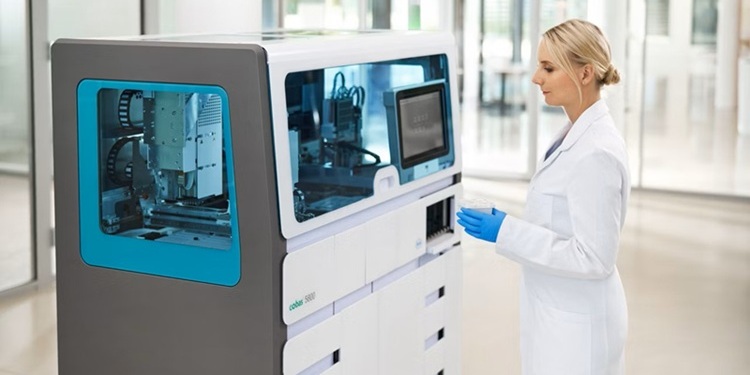
New PCR Test Improves Diagnostic Accuracy of Bacterial Vaginosis and Candida Vaginitis
Bacterial vaginosis (BV) impacts approximately 25% of women of reproductive age, while up to 75% of women experience candida vaginitis (CV) at least once in their lifetime. Vaginal symptoms are one of... Read moreHematology
view channel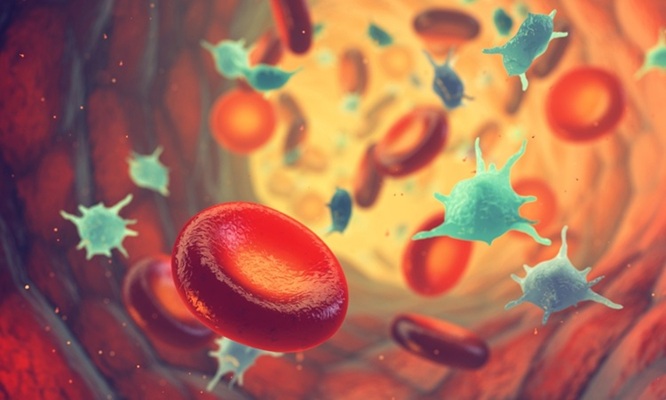
Platelet Activity Blood Test in Middle Age Could Identify Early Alzheimer’s Risk
Early detection of Alzheimer’s disease remains one of the biggest unmet needs in neurology, particularly because the biological changes underlying the disorder begin decades before memory symptoms appear.... Read more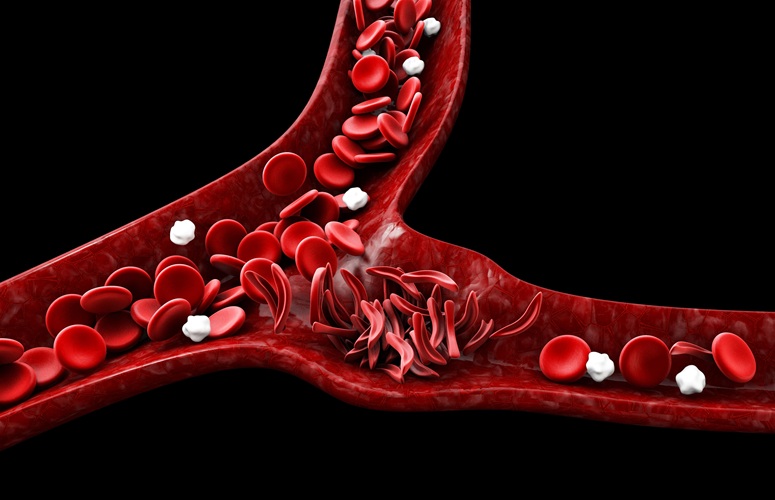
Microvesicles Measurement Could Detect Vascular Injury in Sickle Cell Disease Patients
Assessing disease severity in sickle cell disease (SCD) remains challenging, especially when trying to predict hemolysis, vascular injury, and risk of complications such as vaso-occlusive crises.... Read more
ADLM’s New Coagulation Testing Guidance to Improve Care for Patients on Blood Thinners
Direct oral anticoagulants (DOACs) are one of the most common types of blood thinners. Patients take them to prevent a host of complications that could arise from blood clotting, including stroke, deep... Read moreImmunology
view channel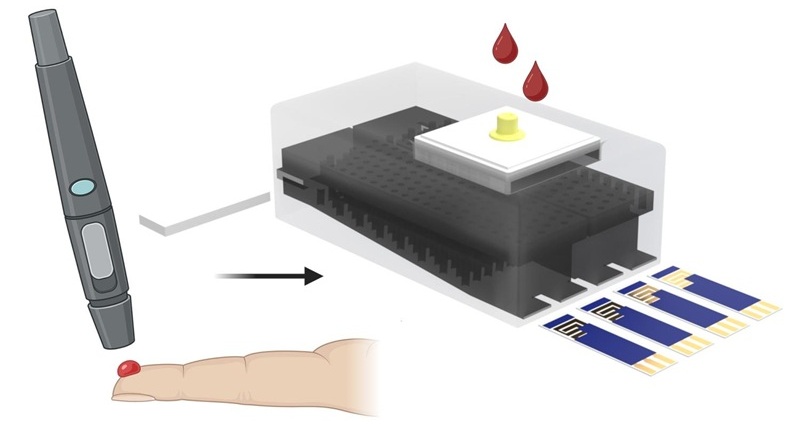
New Test Distinguishes Vaccine-Induced False Positives from Active HIV Infection
Since HIV was identified in 1983, more than 91 million people have contracted the virus, and over 44 million have died from related causes. Today, nearly 40 million individuals worldwide live with HIV-1,... Read more
Gene Signature Test Predicts Response to Key Breast Cancer Treatment
DK4/6 inhibitors paired with hormone therapy have become a cornerstone treatment for advanced HR+/HER2– breast cancer, slowing tumor growth by blocking key proteins that drive cell division.... Read more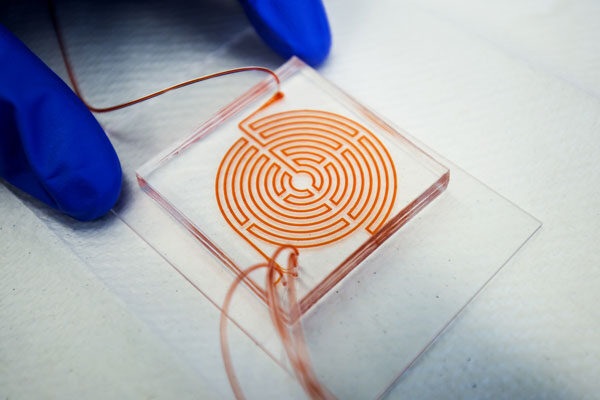
Chip Captures Cancer Cells from Blood to Help Select Right Breast Cancer Treatment
Ductal carcinoma in situ (DCIS) accounts for about a quarter of all breast cancer cases and generally carries a good prognosis. This non-invasive form of the disease may or may not become life-threatening.... Read moreMicrobiology
view channel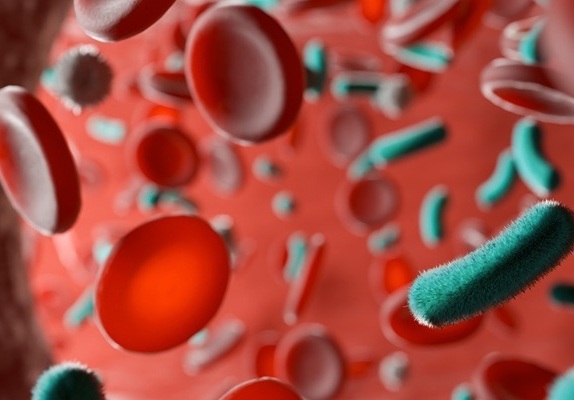
Rapid Diagnostic Test Matches Gold Standard for Sepsis Detection
Sepsis kills 11 million people worldwide every year and generates massive healthcare costs. In the USA and Europe alone, sepsis accounts for USD 100 billion in annual hospitalization expenses.... Read moreRapid POC Tuberculosis Test Provides Results Within 15 Minutes
Tuberculosis remains one of the world’s deadliest infectious diseases, and reducing new cases depends on identifying individuals with latent infection before it progresses. Current diagnostic tools often... Read more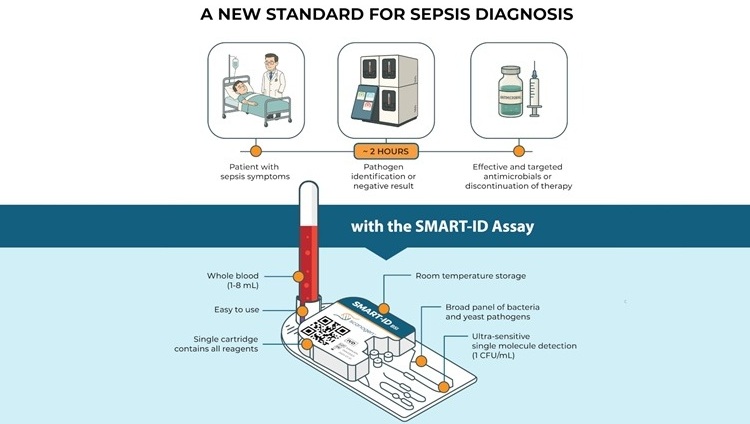
Rapid Assay Identifies Bloodstream Infection Pathogens Directly from Patient Samples
Bloodstream infections in sepsis progress quickly and demand rapid, precise diagnosis. Current blood-culture methods often take one to five days to identify the pathogen, leaving clinicians to treat blindly... Read morePathology
view channelAI Tool Outperforms Doctors in Spotting Blood Cell Abnormalities
Diagnosing blood disorders depends on recognizing subtle abnormalities in cell size, shape, and structure, yet this process is slow, subjective, and requires years of expert training. Even specialists... Read more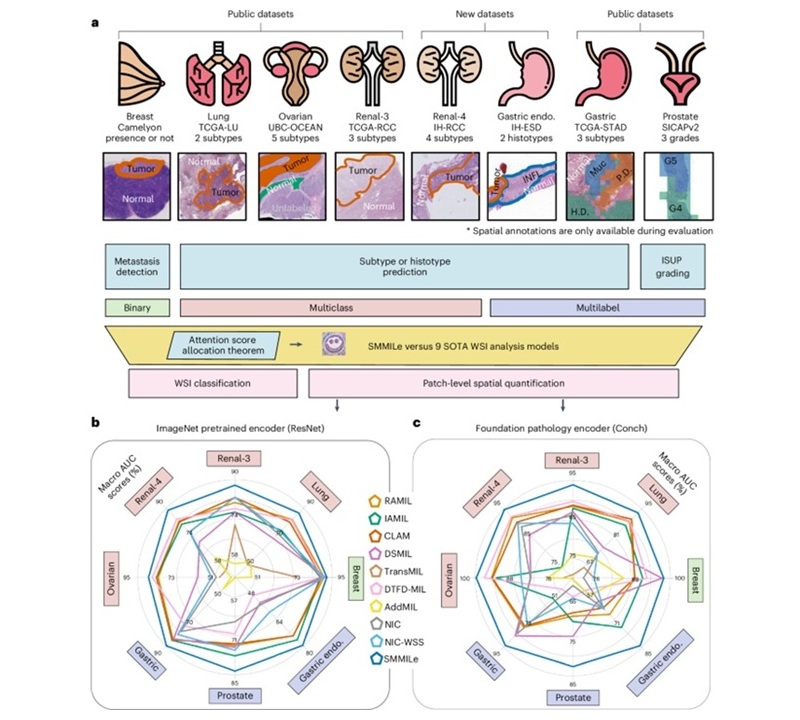
AI Tool Rapidly Analyzes Complex Cancer Images for Personalized Treatment
Complex digital biopsy images that typically take an expert pathologist up to 20 minutes to assess can now be analyzed in about one minute using a new artificial intelligence (AI) tool. The technology... Read moreTechnology
view channel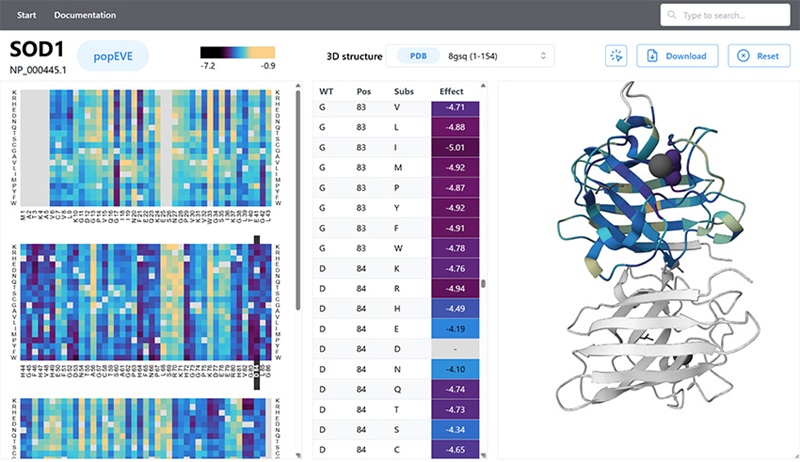
Artificial Intelligence Model Could Accelerate Rare Disease Diagnosis
Identifying which genetic variants actually cause disease remains one of the biggest challenges in genomic medicine. Each person carries tens of thousands of DNA changes, yet only a few meaningfully alter... Read more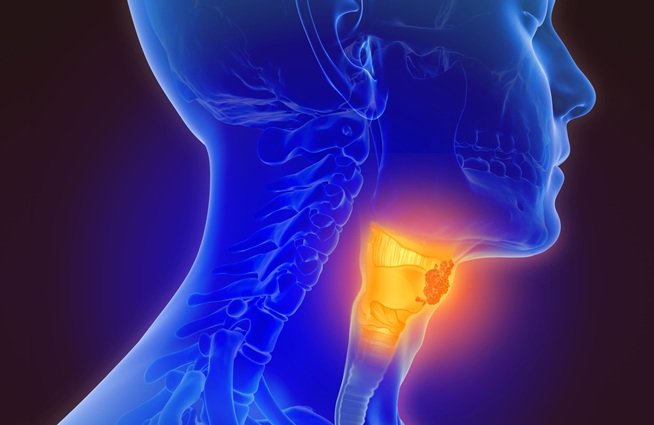
AI Saliva Sensor Enables Early Detection of Head and Neck Cancer
Early detection of head and neck cancer remains difficult because the disease produces few or no symptoms in its earliest stages, and lesions often lie deep within the head or neck, where biopsy or endoscopy... Read moreIndustry
view channel
Abbott Acquires Cancer-Screening Company Exact Sciences
Abbott (Abbott Park, IL, USA) has entered into a definitive agreement to acquire Exact Sciences (Madison, WI, USA), enabling it to enter and lead in fast-growing cancer diagnostics segments.... Read more





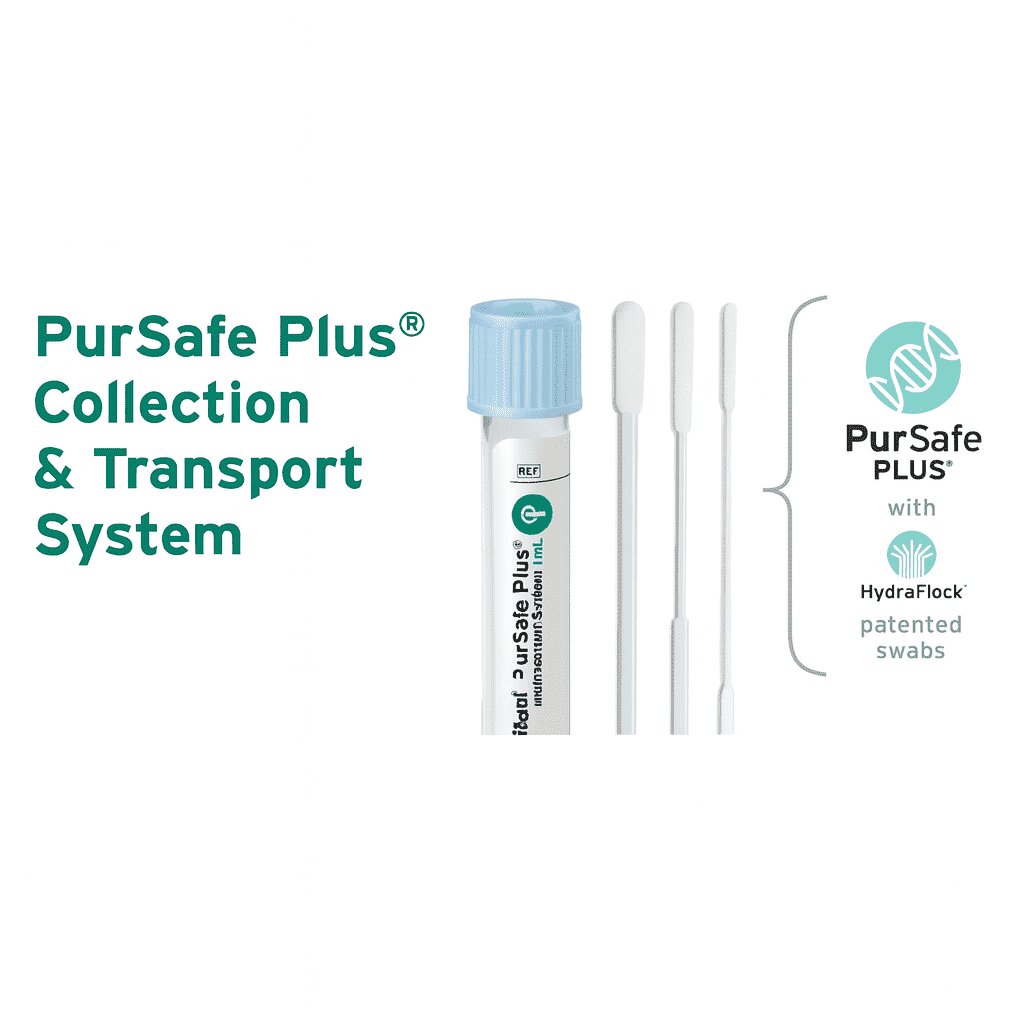

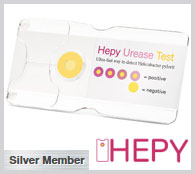
 Analyzer.jpg)

